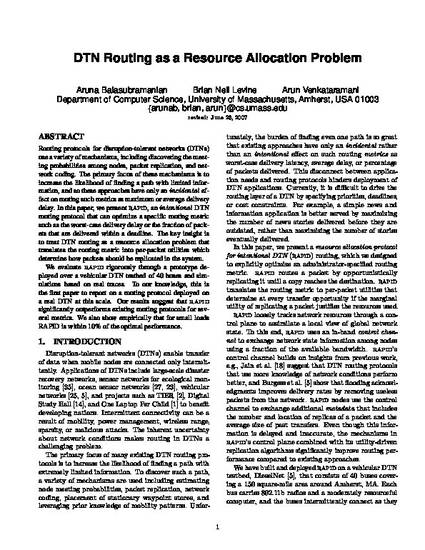
Routing protocols for disruption-tolerant networks (DTNs) use a variety of mechanisms, including discovering the meeting probabilities among nodes, packet replication, and network coding. The primary focus of these mechanisms is to increase the likelihood of finding a path with limited information, and so these approaches have only an incidental effect on routing such metrics as maximum or average delivery delay. In this paper, we present rapid, an intentional DTN routing protocol that can optimize a specific routing metric such as the worst-case delivery delay or the fraction of packets that are delivered within a deadline. The key insight is to treat DTN routing as a resource allocation problem that translates the routing metric into per-packet utilities which determine how packets should be replicated in the system. We evaluate rapid rigorously through a prototype deployed over a vehicular DTN testbed of 40 buses and simulations based on real traces. To our knowledge, this is the first paper to report on a routing protocol deployed on a real DTN at this scale. Our results suggest that rapid significantly outperforms existing routing protocols for several metrics. We also show empirically that for small loads RAPID is within 10% of the optimal performance.
Available at: http://works.bepress.com/arun_venkataramani/2/

This paper was harvested from CiteSeer